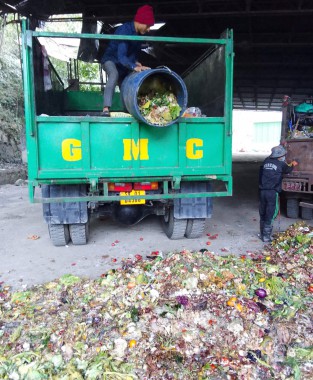




















Saturday, Dec 10, 2022 08:15 [IST]
Last Update: Saturday, Dec 10, 2022 02:34 [IST]
GANGTOK,: In a push for scientific and sustainable management of solid waste, the civic authorities have directed the urban populace of seven municipal bodies of Sikkim to deposit segregated waste only to the garbage collectors.
Enforced since December 1, residents in Gangtok and six other notified urban areas have to compulsorily segregate their household garbage into dry waste and wet waste first at the household level. Only segregated waste is being received by the garbage collectors moving around various localities in municipal vehicles.
“We have instructed all the municipal bodies not to accept unsegregated waste from December 1 onwards. People must segregate their household waste into wet and dry waste before giving to the garbage waste. We are taking this step strictly for scientific management of solid waste is this problem will naturally increase with more urbanisation and population growth in Sikkim,” said Urban Development secretary M.T. Sherpa.
The Urban Development department is the administrative department for the urban local bodies in Sikkim. The State has a three-tier civic body with Gangtok Municipal Corporation (GMC), Namchi Municipal Council, and nagar panchayats of Singtam, Rangpo, Nayabazaar-Jorethang, Gyalshing and Mangan.
Wet waste are those biodegradable kitchen products like leftover edibles and vegetables. Dry waste are those items like paper, glass, metal, cloth, plastics, etc. that can be recycled.
Gangtok, the State’s largest urban area with around 1.5 lakh population, generates about 50 ton of waste daily on an average which is dumped in a landfill at Martam, about 20 km away. There are two more landfills that cater to the waste generated from South-West Sikkim (Shipchu) and North Sikkim (Mangan) under their respective urban local bodies.
The Urban Development secretary maintained that there has been an “overwhelming” response from the people who have started bringing segregated dry and wet waste to the garbage collectors for disposal. There have been some isolated incidents where people bring unsegregated waste out of ignorance but since the household waste is less in quantity, they can segregate at the spot itself and hand it over to the municipal garbage vehicles, he said.
Sherpa informed that the State government and municipal bodies would be working to generate compost, bio-gas and electricity by processing the bio-degradable waste at the landfills. He informed that the State government is allotting another landfill in Pakyong. Wet waste has high value for compost and can be processed to generate bio-gas and electricity, he said.
Similar directive of waste segregation at household level has been enforced in semi-urban areas that fall under the Rural Development department.
“It is not that only bazaar areas generate waste. We have many places that have bazaar characters but come under panchayats and Rural Development department. It is also important to take care of waste generated from these areas also as such waste are also being taken to the landfills,” said the Urban Development secretary.
